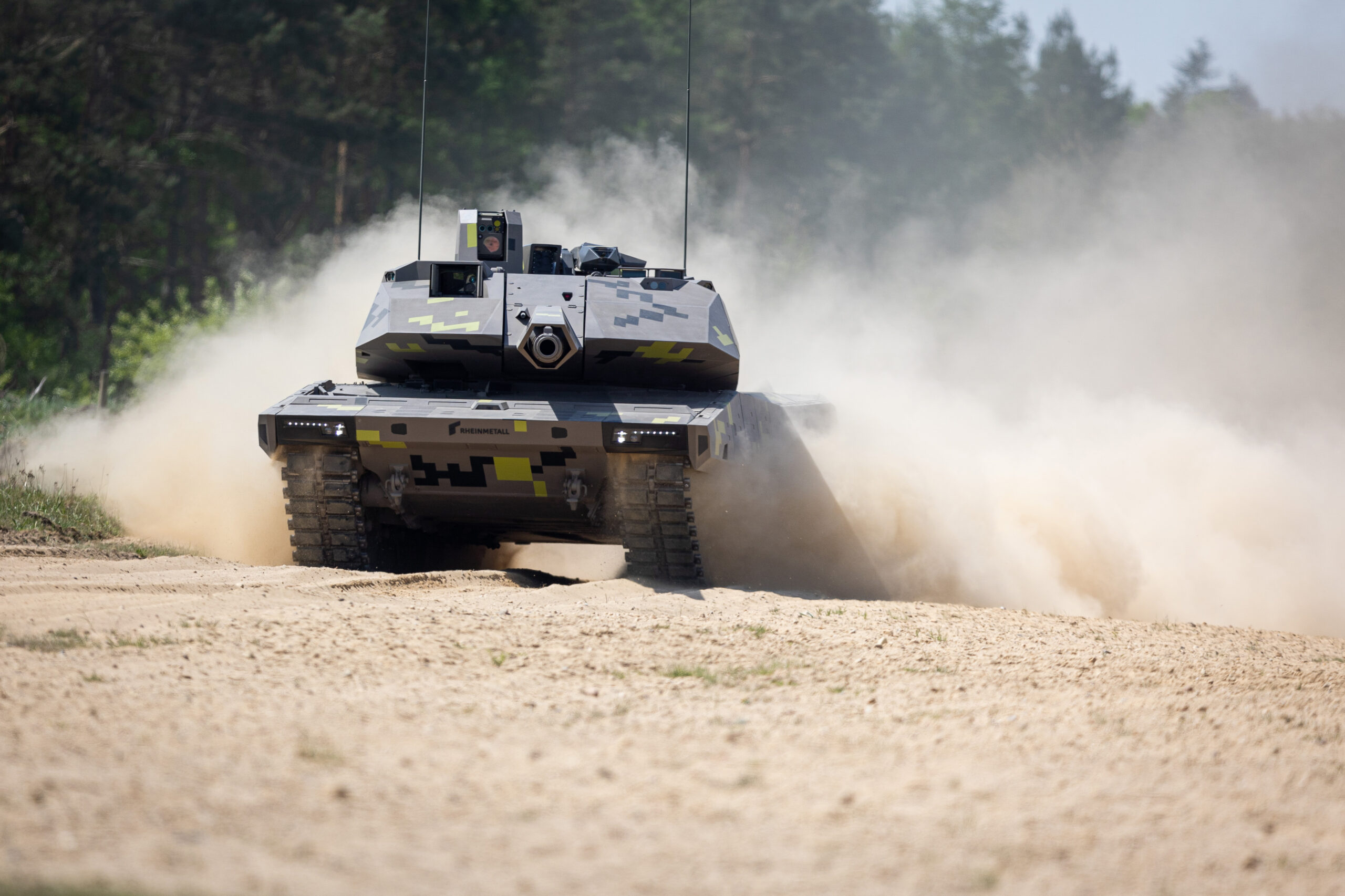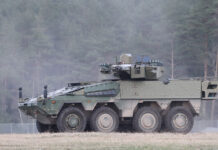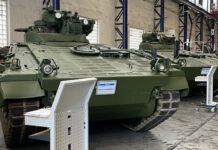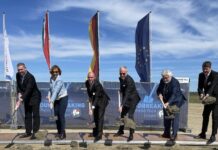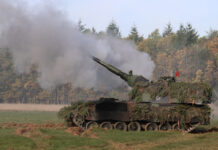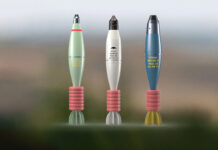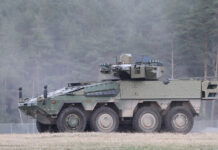Rheinmetall is presenting its new KF51 PANTHER as the latest member of its family of tracked vehicles. KF is short for “Kettenfahrzeug” (tracked vehicle). According to the company, the MBT concept sets new standards in all areas – lethality, protection, reconnaissance, networking and mobility.
All weapon systems are connected to the commander’s and gunner’s optics and the fire control computer via the fully digitalised NGVA architecture. This is to enable both a hunter-killer and a killer-killer function and thus instantaneous target engagement – in the future also supported by artificial intelligence (AI).
Lethality
The main armament is the 130mm Rheinmetall Future Gun System. In addition, further armament options are available to provide concentrated firepower for long-range strikes and against multiple targets, Rheinmetall writes in a press release.
The Rheinmetall Future Gun System (FGS) consists of a 130 mm smoothbore gun and a fully automatic ammunition handling system. The autoloader holds 20 ready rounds. The FGS can fire kinetic energy (KE) rounds as well as programmable airburst ammunition and corresponding practice rounds.
A 12.7 mm coaxial machine gun complements the main weapon. There are several options for the integration of remotely controlled weapon stations (RCWS). Integrating a launcher for HERO 120 loitering munition from Rheinmetall’s partner UVision into the turret is equally possible. This enhances the KF51’s ability to strike targets beyond the direct line of sight.
Survivability and Force Protection
The PANTHER’s protection concept incorporates active, reactive and passive protection technologies, including active protection against KE threats. Rheinmetall’s Top Attack Protection System (TAPS) is to ward off threats from above, while the ROSY smoke/obscurant systems conceals the KF51 from enemy observation. Moreover, its digital NGVA architecture enables integration of additional sensors for detecting launch signatures, the company emphasises.
Reconnaissance and Situational Awareness
Thanks to the panoramic SEOSS optical sensor and EMES main combat aiming device, the commander and gunner are both able to observe and engage targets independently of each other, both day and night, while a stabilised daylight and IR optic with integrated laser rangefinder is available to both. In addition, via a display in the fighting compartment, the crew has a 360° view of the vehicle’s surroundings. Integrated, unmanned aerial reconnaissance systems can enhance the crew’s situational awareness in built-up areas and in the immediate vicinity of the vehicle. With these, the crew can also conduct reconnaissance under armour protection and share the results with other actors in a networked manner.
Mobility
The KF51 PANTHER builds on the mobility concept of the LEOPARD 2. It has an operational weight of 59 tons and a maximum operating range of around 500 kilometres. It fits into the AMovP-4L profile.
Future viability
According to Rheinmetall, the KF51 PANTHER can be easily updated and equipped with the latest capabilities and functions. Its NGVA system architecture enables iterative development, which can then be updated in harmony with innovation cycles. Rheinmetall emphasises that the KF51 is the first representative of a new generation of combat vehicles.
JH


